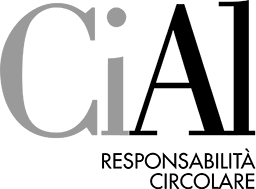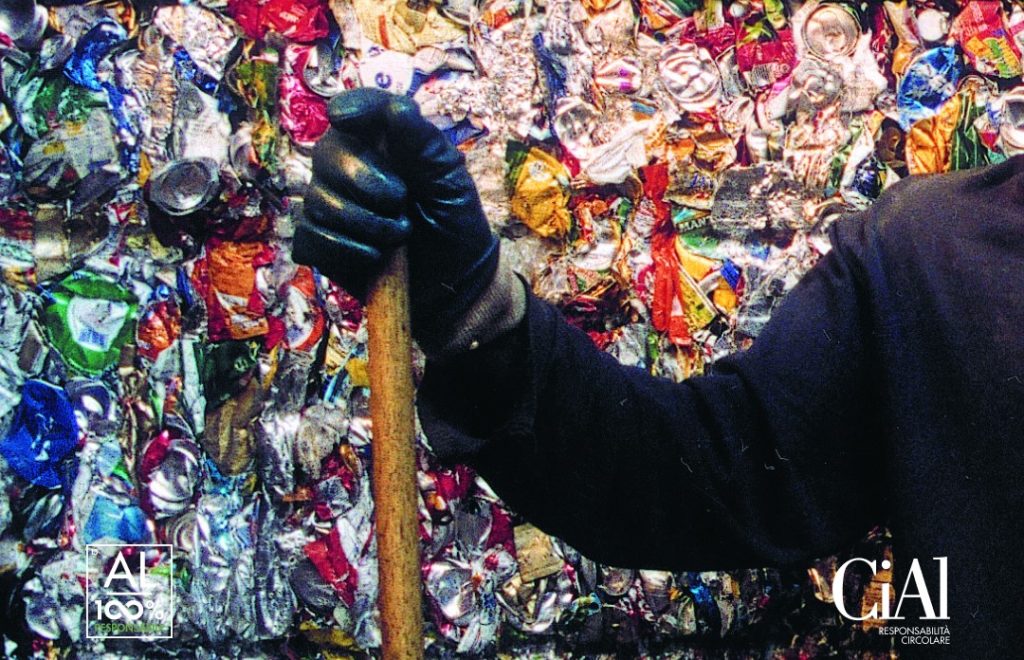70.3% of the total amount placed on the market and 93.8% of aluminium cans for beverages recycled.
– The Italian model for the management of aluminium packaging and packaging waste continues to provide a model of excellence in the European landscape, in line with the principles of the Circular Economy Action Plan. This is confirmed by the data released during the annual meeting of CIAL – Italy’s National Consortium for Recycling of Aluminium Packaging, held on 16 May yesterday in Milan.
During 2023, 70.3% of the aluminium packaging placed on the market (i.e. 59,300 tonnes) was recycled and, with waste-to-energy recovery, the total share recovered totalled 74.1%.
With an average of 70%, the recycling rate of aluminium packaging in Italy has therefore far exceeded the EU targets for 2025 (50%) and 2030 (60%) for some years now.
These are significant numbers which have prevented 417,000 tonnes of CO2 greenhouse emissions and allowed energy savings of over 182,000 tonnes of oil equivalent.
The selection of criteria for the management of the aluminium packaging supply chain guarantees one of the most efficient cost-result ratios in Europe, creating an excellent model of social, economic and environmental sustainability alongside an extremely constructive relationship with the region, achieved also by the combined action of institutions, businesses, operators, citizens and municipalities.
The efficiency of the Italian system is even more evident if analysing the breakdown of the recycling rate for aluminium beverage cans alone, which was 93.8% in 2023. A record result, in line with that of countries with systems based on security deposits and far superior to the average European recycling rate, which is currently 76%.
As affirmed by Carmine Bruno Rea, Chairman of CIAL, “For years now, our Consortium has paid special attention to quality separate collection, including through the recovery of any fine fractions, such as caps, closures and other accessories, thin packaging and small items. These are considerable quantities of aluminium that, thanks to the availability of suitable treatment technologies, could provide a great opportunity to recover materials otherwise destined for disposal. In short, increasingly ambitious recycling goals and a growing demand for durable materials and applications means that materials like aluminium – which is by nature durable and permanent – will be collected and recovered, even in the smallest and minute quantities and even after the sorting and processing of recyclable materials, leading to significant benefits in economic, social and environmental terms. In line with the objectives and new regulatory scenarios in the circular economy.”
“Ever since it was established, CIAL has been promoting an evolved concept of sustainability, stimulating the various players involved in the aluminium packaging chain to effectively cooperate. It is a matter of circular responsibility which requires that everyone contributes to achieving the general collection and recycling objectives. It is fundamental that every citizen/consumer should always be aware of the importance of choices when purchasing products and when sorting domestic waste. Even the smallest efforts have a decisive impact on the achievement of important results in the overall waste management system” reiterates Chairman Rea.
THE 5 rules for collecting aluminium
CIAL has highlighted 5 simple rules for the correct collection of aluminium packaging:
- Not only cans – In the separate collection of aluminium, in addition to the most popular beverage cans, the following should also be included: food trays and boxes, including those for animal food, spray cans, tubes for creams, preserves and sanitary and cosmetic products, sheet as thin as chocolate wrapping and kitchen roll, caps, capsules and various closures.
- Never alone – Aluminium is (almost) never collected by itself but with plastic and/or glass.
- Including dirty, as long as empty – For recycling purposes it is not necessary to rinse or wash aluminium containers. Just make sure all food (or other product) residues have been removed.
- Small but precious – Aluminium is precious, thanks to recycling that allows huge energy and environmental savings. For this reason, even the smallest components, e.g. the screw caps of bottles of water, wine, spirits and preserves, or even the lids of yoghurt pots, should be collected and recovered.
- Compact and crumpled up – To facilitate the recycling steps, it is always useful to separate aluminium from other materials (remove cap bottles, detach lids from yoghurt pots, etc.).
And compact/crumple together the smallest and thinnest pieces.
CIAL 2023 figures
- 241 companies in the consortium
- 434 affiliated operators, 209 platforms and 11 smelters throughout the whole national territory ensure the collection, treatment, recycling and recovery of aluminium.
- 5,481 municipalities (69% of Italian municipalities) collaborate with CIAL in the separate collection of aluminium packaging, within the framework of the Anci-Conai Framework Agreement, throughout the whole national territory. There are 44.8 million citizens involved (76% of the Italian residents served).
- Quantity of aluminium packaging entering the Italian market: 84,300 tonnes.
- Recycling of 59,300 tonnes of aluminium packaging
- Total recovery of aluminium packaging in Italy (recycling share + share of packaging sent to energy recovery): 62,500 tonnes.
- Recycling: 59,300 tonnes of aluminium packaging, equivalent to 70.3% of the quantity on the market
- Waste-to-energy recovery: 3,200 tonnes (proportion of thin packaging that goes to the waste-to-energy plant).

